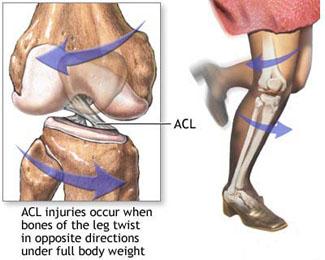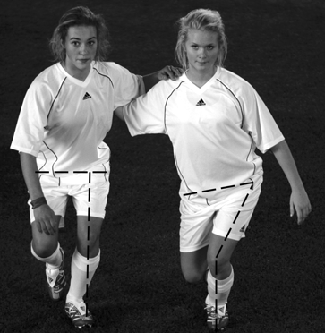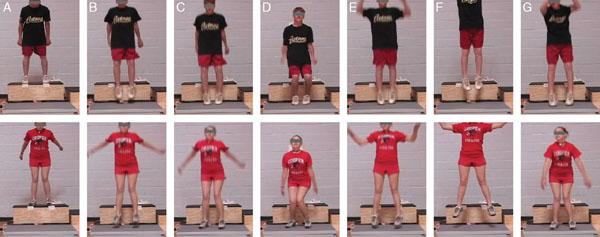Very impressed with the knowledge you are posting here. Thanks for sharing and let us know more about new releases.
How to Prevent ACL Injuries
December 21 2008
ACL injuries are the most common knee injuries and ACL injury prevention studies have shown a reduction of ACL injuries from 60% to 80%. This has been shown in male and female athletes from various sports and across different age groups.
A ACL Injury Mechanism

K Key elements of ACL injury prevention program
Now let’s see the key elements of an ACL injury prevention program based on the latest studies.
Technique
1. Proper landing technique: Landing softly on the forefoot and rolling back to the rearfoot, emphasizing knee and hip flexion on landing and with lateral (cutting) manoeuvres. Two-feet landing is encouraged where possible & they should aim to achieve the “knee over toe position.
2. Proper deceleration & cutting: Rounded cut manoeuvre instead of a sharp or more acute angle during the cut. One step stop deceleration pattern should be avoided and replaced with a three-step quick stop
3. Avoiding excessive “caving in” at the knee: Keeping the knee feet in a straight line when landing and squatting as shown in the pic. The angled knee & feet line shows the wrong way.

Strength & Power: Intervention programmes should focus on increasing hamstring, gluteus medius and hip abductor strength with neuromuscular training, plyometrics, and agility exercises.
Identify Players at Risk:The drop vertical jump test should be used to identify players at risk. Athletes who land with caving in knee motion should perform neuromuscular training before sports participation.

Figure: Subjects were instructed to drop off the box (31 cm) and immediately perform a maximal vertical jump for 3 repetitions.
P PEP Program
In 1999 the ACL “PEP Program: Prevent injury and Enhance Performance” was developed in Santa Monica, California. This ACL prevention program consists of warm-up, stretching, strengthening, plyometrics and sport-specific agilities.
The benefits of PEP for ACL injury prevention are:
Cost effective: On-field warm-up program that requires only traditional soccer equipment (cones and soccer ball).
Time: It’s done 2-3 times a week over the course of the 12-week soccer season and is 20 min in duration.
Adherence: The programme is designed as a warm-up, hence adherence rates are higher and the element of neuromuscular fatigue does not affect the performance of the therapeutic exercises
Evidence-Based: Scientifically proven to dramatically reduce ACL injuries in women soccer players.
You can learn more about the PEP program and download a copy of PEP Program. The PEP was developed for scoccer players, but it can me modified according to your sport.
Related Articles
personal injury lawyer houston | Thu September 03, 2009
The female soccer player’s risk of injuring the ACL has been shown to be as much as eight times that of young men. One article said that the non-contact ACL injuries can be 10 times higher in women. Using the simple exercises developed by the Santa Monica Foundation in a practice or training program has been shown to significantly reduce the number of ACL injuries in these young athletes.

